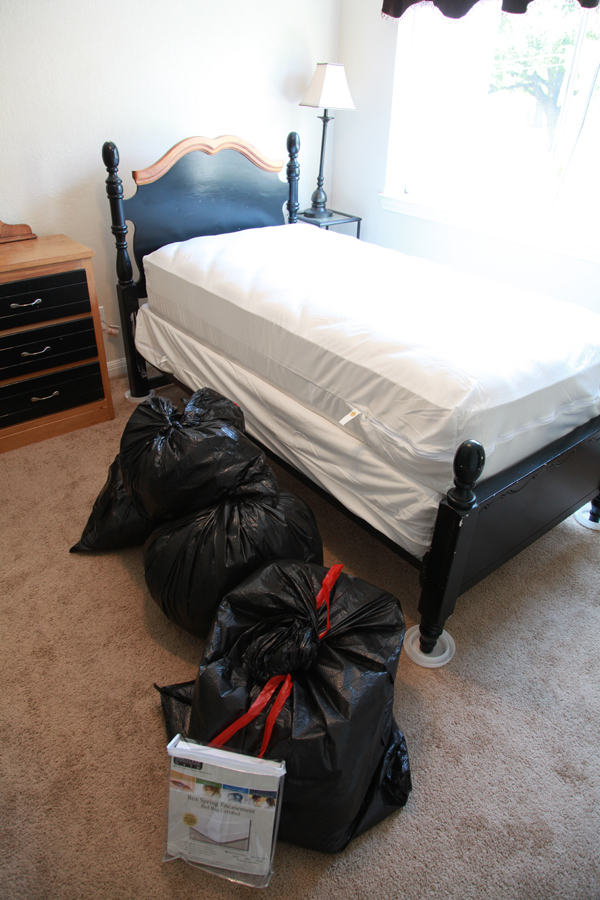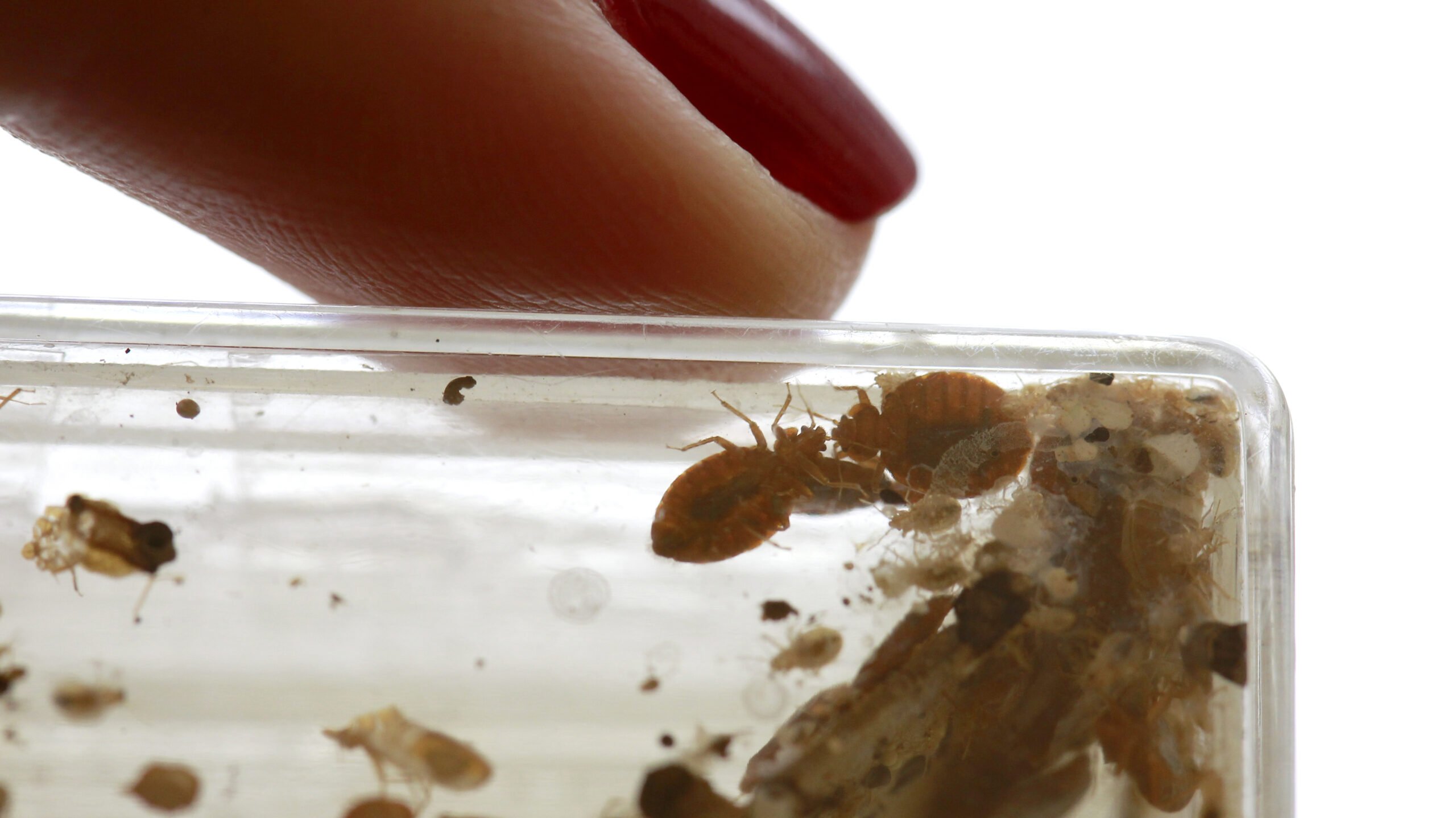To bomb a room for bed bugs, purchase a bed bug fogger from a hardware store and follow the instructions on the label for proper use. Ensure the room is well-ventilated and all food and utensils are stored away before setting off the fogger.
Dealing with a bed bug infestation can be stressful and challenging. However, using a bed bug fogger can be an effective solution to eliminate these pests. By following the proper steps and precautions, you can effectively bomb a room for bed bugs and regain control of your living space.
This guide will provide you with the necessary information to safely and efficiently use a bed bug fogger, allowing you to quickly and effectively address the infestation. Keep reading to learn how to effectively bomb a room for bed bugs and rid your home of these unwanted pests.
Preparation
Preparing a room for bed bug eradication is a crucial step in ensuring effective treatment. Proper preparation can help eliminate bed bugs and prevent their return. Before beginning the process of bombing a room for bed bugs, it’s important to follow specific steps to ensure the treatment is successful.
Identifying Bed Bug Hotspots
It’s crucial to have a keen eye for identifying potential bed bug hotspots in a room. These include areas such as:
- Bed Frames: Check the seams, joints, and crevices of the bed frame for any signs of bed bugs.
- Mattresses: Thoroughly inspect the seams and edges of the mattress for any signs of bed bug presence.
- Furniture: Examine upholstered furniture, especially in the seams and folds, as bed bugs tend to hide in these areas.
- Clutter: Clear any clutter in the room as bed bugs often seek refuge in any items left undisturbed.
Clearing The Room
Prior to initiating the bombing process, it’s essential to ensure the room is properly cleared. This involves:
- Removing Personal Items: Take out all personal belongings from the room, including clothing, bedding, and any other items.
- Vacuuming: Thoroughly vacuum the room to remove any bed bugs, eggs, or larvae that may be present.
- Sealing Cracks and Crevices: Seal any cracks, crevices, and gaps in the walls, floors, and furniture to prevent bed bugs from escaping or re-entering the room post-treatment.

Credit: citybugs.tamu.edu
Choosing The Right Products
When it comes to bomb a room for bed bugs, choosing the right products is crucial for effective eradication. The type of insecticides and non-chemical options you select will significantly impact the success of your bed bug treatment. Here’s a brief overview of the choices available to help you make an informed decision.
Types Of Insecticides
There are various types of insecticides specifically formulated for bed bug control. Each type has its own mechanism of action and application method. When selecting an insecticide, consider the following options:
- Pyrethroids: These synthetic insecticides are effective against bed bugs and offer residual control. However, bed bugs can develop resistance to pyrethroids over time.
- Insect Growth Regulators (IGRs): IGRs disrupt the growth and development of bed bugs, affecting their ability to reproduce. They are often used in combination with other insecticides to create a comprehensive treatment program.
- Desiccants: These substances destroy the outer waxy layer of bed bugs, leading to dehydration and eventual death. They are considered a natural and non-toxic alternative to synthetic insecticides.
Non-chemical Options
For individuals concerned about chemical exposure or seeking alternative methods for bed bug control, non-chemical options are available. These can include:
- Heat Treatment: Exposing infested items or entire rooms to high temperatures can effectively kill bed bugs and their eggs.
- Steam: Using steam machines to treat infested areas can penetrate deep into cracks and crevices, effectively killing bed bugs on contact.
- Vacuuming: Regular vacuuming can help remove bed bugs and their eggs from carpets, upholstery, and other surfaces.
Application Process
Bombing a room for bed bugs involves a specific application process to effectively eradicate these pesky pests. Implementing the correct Step-by-Step Guide and adhering to Safety Precautions is crucial for a successful bed bug treatment.
Step-by-step Guide
- Vacate the room and remove all living creatures.
- Prep the space by decluttering and vacuuming thoroughly.
- Seal cracks and crevices to prevent bed bug escape.
- Set up the bed bug fogger in the center of the room.
- Activate the fogger, ensuring all windows and doors are closed.
Safety Precautions
- Wear protective gear – gloves, mask, and goggles.
- Keep children and pets away from the treated area.
- Do not re-enter the room until the specified time has elapsed.
- Ventilate the room thoroughly before returning.

Credit: www.amazon.com
Post-treatment
Now that you have successfully bombed the room for bed bugs, it’s time to focus on the crucial post-treatment steps. These steps are essential to ensure that the bed bug infestation is completely eradicated and does not reoccur. In this section, we will discuss the two key post-treatment tasks: Cleaning Up Residues and Monitoring for Reinfestation.
Cleaning Up Residues
After a bed bug treatment, it’s important to clean up any residues left behind. This not only helps in getting rid of any remaining bed bugs but also ensures the health and hygiene of your living space. Here are the steps you should follow:
- Vacuum thoroughly: Start by vacuuming the entire room, paying close attention to cracks, crevices, and furniture. Use the crevice attachment to reach into tight spots where bed bugs may hide. Dispose of the vacuum bag in a sealed plastic bag immediately after vacuuming.
- Wipe down surfaces: Use a damp cloth or sponge along with a mild detergent to clean all surfaces in the room, including furniture, walls, and floors. Be sure to clean both the visible and hidden areas, as bed bugs can hide in hard-to-reach places.
- Steam cleaning: Consider using a steam cleaner to treat upholstered furniture, bedding, and carpets. The high temperature of the steam kills any remaining bed bugs and their eggs.
- Dispose of infested items: If you have any heavily infested items that are beyond salvaging, it is best to dispose of them. Seal them tightly in plastic bags and consider marking them as “infested” to prevent others from picking them up.
Monitoring For Reinfestation
Even after conducting a successful bed bug treatment, it is important to stay vigilant and monitor for any signs of reinfestation. Here are some steps you should take:
- Inspect regularly: Regularly inspect the room and bedding for any signs of bed bugs, such as live bugs, eggs, or dark spots on sheets. Pay close attention to areas near the bed, including the headboard, mattress seams, and baseboards.
- Use bed bug traps: Consider placing bed bug traps under the bed legs or in other strategic locations. These traps can help detect any bed bug activity early on and act as an additional preventive measure.
- Encase mattresses and box springs: Invest in bed bug-proof encasements for your mattress and box springs. These encasements prevent bed bugs from infesting these areas, making it easier to spot any signs of bed bug activity.
- Seek professional help if necessary: If you notice any signs of reinfestation despite your efforts, do not hesitate to seek professional help. A pest control expert can assess the situation and provide further guidance on how to eliminate the bed bugs once and for all.
By following these post-treatment steps, you can effectively prevent the bed bug infestation from returning and enjoy a bed bug-free living space.
Common Mistakes To Avoid
To effectively bomb a room for bed bugs, it’s crucial to avoid common mistakes that could compromise the process. Properly preparing the room and following instructions for insecticide application is essential to ensure successful eradication. Additionally, thorough cleaning and decluttering are crucial before and after the treatment to maximize its effectiveness and prevent future infestations.
Incomplete Treatment
One of the most common mistakes people make when trying to bomb a room for bed bugs is conducting an incomplete treatment. Bed bugs are notorious for their ability to hide in cracks and crevices, making them difficult to eliminate completely. Failing to treat the entire room, including all furniture and infested items, can result in a recurring infestation.
To avoid this mistake, it’s important to thoroughly inspect the entire room and identify all infested areas. This includes checking bedding, furniture, curtains, and even wall hangings. Missing just one hiding spot could allow bed bugs to repopulate and continue the infestation.
Overlooking Hidden Spots
Another mistake to avoid when bombing a room for bed bugs is overlooking the hidden spots where these pests love to hide. Bed bugs are experts at finding tight spaces to escape detection, and they can easily go unnoticed in areas such as electrical outlets, behind picture frames, or under loose wallpaper.
To effectively eliminate bed bugs, it’s crucial to thoroughly inspect and treat these hidden spots. Use a flashlight to carefully examine corners, cracks, and crevices throughout the room, paying close attention to areas near the bed, furniture, and walls. Don’t forget to remove outlet covers and apply treatment inside the electrical sockets, as bed bugs can use these as entry points.
Boldly targeting these hidden spots will significantly increase your chances of eradicating the infestation completely, leaving no room for bed bugs to thrive.

Credit: todayshomeowner.com
Professional Vs. Diy
Professional vs. DIY: When it comes to eliminating bed bugs from your home, you have the option to hire a professional exterminator or tackle the problem yourself.
Pros And Cons
- Professional:
- Highly effective
- Expertise in bed bug removal
- Guaranteed results
- DIY:
- Cost-effective
- Instant action
- Satisfaction of doing it yourself
When To Call An Exterminator
- Extensive infestation
- Recurring bed bug problems
- Unsuccessful DIY attempts
Frequently Asked Questions For How To Bomb A Room For Bed Bugs
How Do You Bomb A Room For Bed Bugs?
To bomb a room for bed bugs, you can use a bed bug fogger or insecticide bomb. First, cover all food, dishes, and utensils. Next, seal the room, turning off all fans and air conditioning. Activate the fogger in the center of the room, and leave for a few hours.
Afterward, ventilate the room thoroughly.
Can Bombing A Room Eliminate Bed Bugs Completely?
Bombing a room can help eliminate bed bugs but may not entirely eradicate them. Bed bugs can hide in cracks and crevices, making it difficult for the fog or insecticide to reach them. For a more effective treatment, it’s recommended to follow up with other methods like steam cleaning, vacuuming, and using residual insecticides.
Are Bed Bug Bombs Safe To Use?
While bed bug bombs can be effective, they should be used with caution. It’s crucial to follow the instructions provided by the manufacturer and take necessary safety precautions. Clear the room of people and pets, cover or remove any exposed food, and ensure proper ventilation after the treatment.
It’s advisable to consult a professional exterminator for guidance.
Conclusion
Ensuring your space is free of bed bugs is crucial for a peaceful environment. By following simple bomb methods, you can effectively eliminate these pests. Protect your home and loved ones by taking these proactive steps today. A bed bug-free zone equals a stress-free zone.
Related posts:

I’m MD Tanvir, and I bring years of expertise gained from working closely with pest control companies to the forefront. My journey in the industry has inspired me to launch Bug Battler, a platform aimed at equipping people with the know-how to combat pests autonomously. Through Bug Battler, I aim to empower individuals with practical insights to tackle pest infestations effectively.

